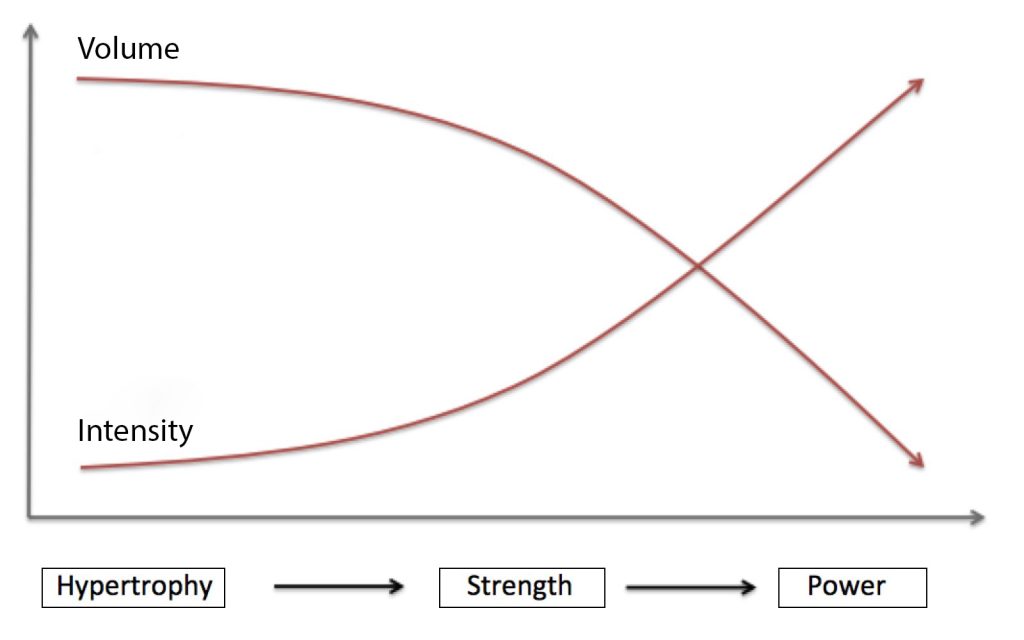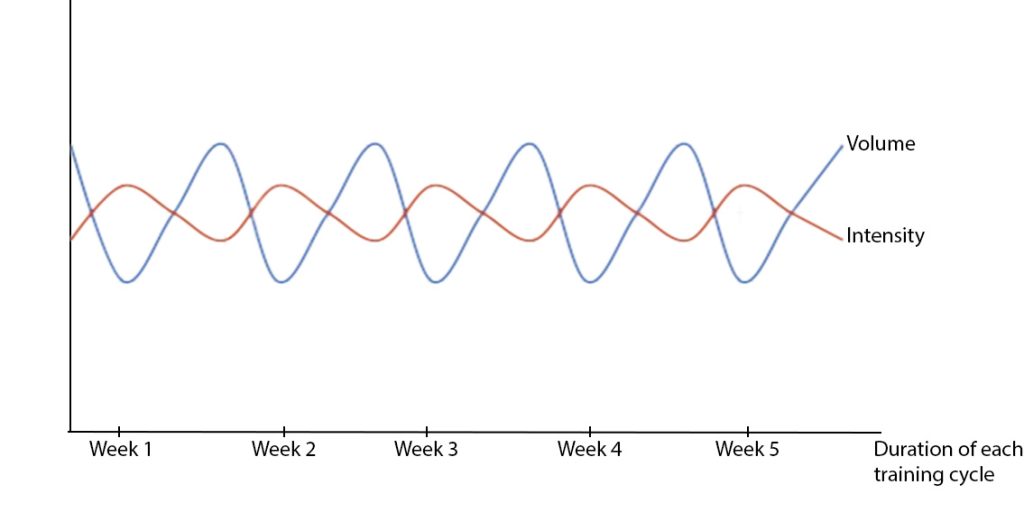Mastering calisthenics requires not just dedication and practice but also a strategic approach to training, enter periodization – a systematic approach to training, that helps you achieve your calisthenics goals more effectively. Keep reading to learn how to use periodization to make the most of your training!
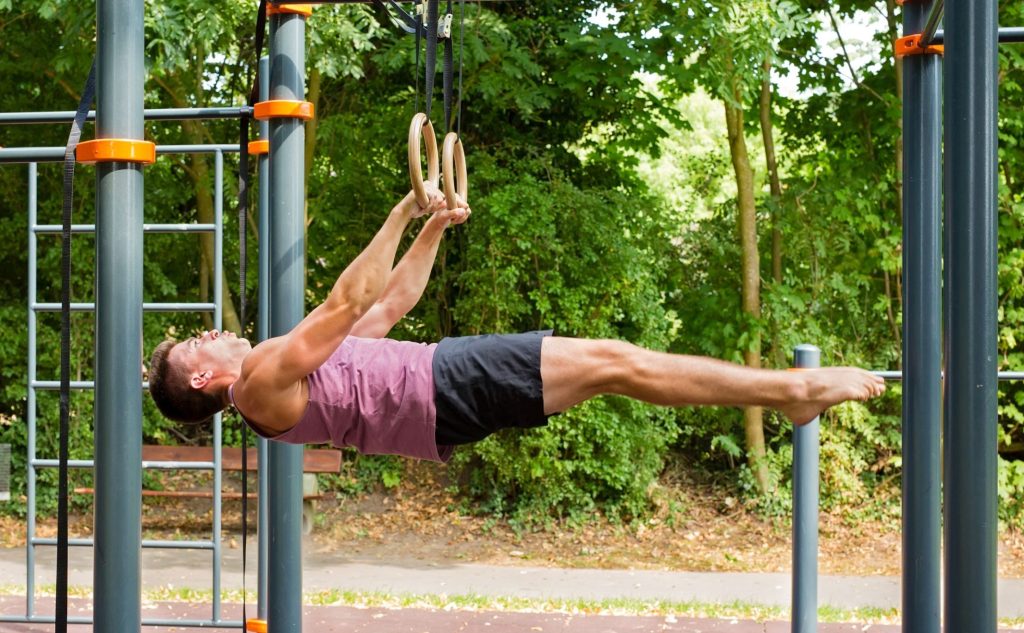
Table of Contents
What Is Periodization In Calisthenics?
Periodization in calisthenics refers to a systematic approach to organizing and structuring training over specific time periods to optimize performance and achieve desired fitness goals.
In calisthenics, periodization typically involves manipulating variables such as exercise selection, intensity, volume, and frequency. The goal is to systematically progress through different phases to stimulate muscle growth, strength gains, skill acquisition, and overall performance improvement.
How To Pick A Goal For Your Training
The first step when it comes to periodizing your training is to pick one or more goals (read more about goal setting in this blog post). It’s best to focus on one or two primary goals at a time to optimize your efforts and maximize progress. While you can work on multiple aspects over the long term, prioritizing one or two goals during a macrocycle allows for concentrated effort and optimal adaptation.
The 3 Periodization Cycles
The first concept you need to understand when applying periodization to your training is the training cycles. Regardless of the periodization model you choose, you will divide your plan into three different time periods known as cycles: the macrocycle, mesocycle, and microcycle.
- Macrocycle: A macrocycle is the largest cycle in the periodization framework, typically spanning several months to a year or more. It represents the long-term plan & goals.
- Mesocycle: A mesocycle is an intermediate training phase within a macrocycle. It consists of several weeks or months (typically 2 to 8 weeks) and focuses on specific training objectives. Mesocycles allow for targeted training adaptations and are designed to address particular aspects of fitness, hypertrophy, strength, and skill. They involve manipulating training variables such as intensity, volume, exercise selection, and training focus to optimize progress.
- Microcycle: A microcycle is the smallest cycle within the periodization framework, typically lasting a week or less. It represents a shorter-term training block and provides more detailed planning for training sessions within a mesocycle. Microcycles allow for further manipulation of training variables and offer flexibility in adjusting the training stimulus. They can involve variations in intensity, volume, exercise order, and specific training emphasis within a given week.
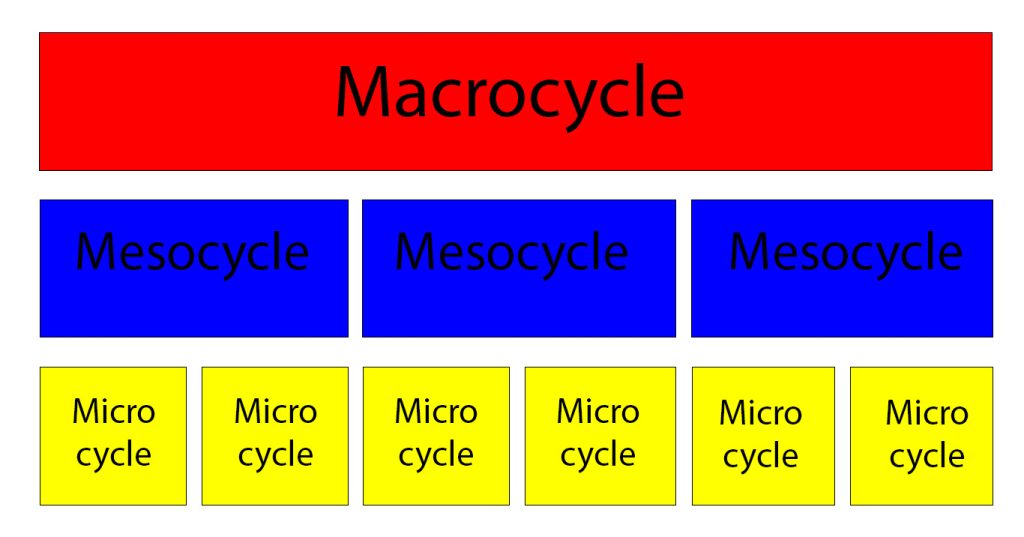
3 Types Of Periodization (phase potentiation)
Periodization refers to how and when you subject your body to stress. There are serval types of periodization, but in this blog post, we are going to focus on the 3 most useful types for calisthenics which are Linear Periodization, Undulating Periodization, and Block Periodization.
- Linear Periodization: Is the most traditional and straightforward form of periodization. It involves dividing the training program into distinct phases, typically starting with a high-volume, low-intensity in the hypertrophy phase and gradually progressing to a lower volume and higher intensity in the strength phase. Each phase lasts for a specified period, usually several weeks to several months, before moving on to the next phase.

- Undulating Periodization: Also known as nonlinear periodization, this approach involves varying the training variables within shorter time periods, such as weekly or even daily. It alternates between different training intensities, volumes, and exercise selections more frequently. For example, one day might focus on high-intensity, low-volume exercises(strength), while another day might emphasize low-intensity, high-volume exercises(hypertrophy).

- Block Periodization: Block periodization divides the training program into distinct blocks, each focusing on a specific training goal. Each block typically lasts several weeks and emphasizes a particular aspect, such as hypertrophy, strength, power, or skill development. The blocks are structured in a way that the training variables and focus gradually progress from one block to the next, optimizing adaptations in each specific area.
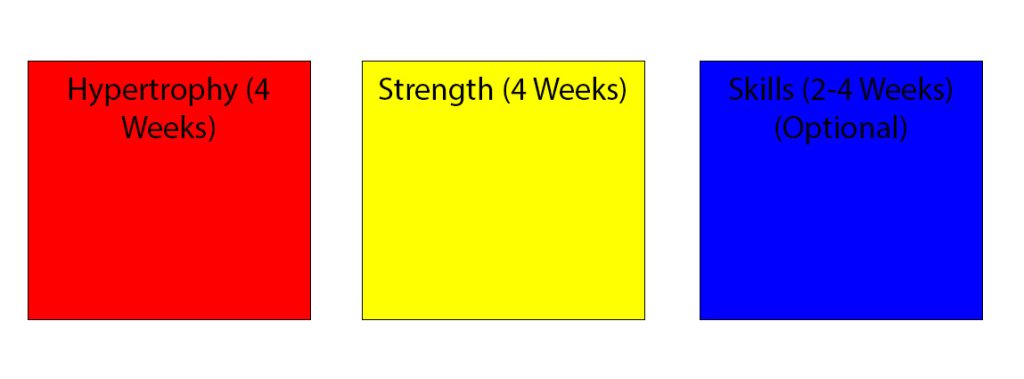
- Hypertrophy Phase: This phase focuses on increasing muscle size and strength. It involves performing exercises with moderate to high repetitions and shorter rest periods to induce muscle growth, which is going to be useful for later strength work.
- Strength Phase: In this phase, the emphasis shifts towards building strength. The exercises involve higher intensity, lower repetitions, and longer rest periods. The focus is on challenging the muscles to handle heavier loads and develop maximal strength.
- Skill Phase: This phase is dedicated to refining specific calisthenics skills, such as handstands, muscle-ups, or planches. It involves practicing skill-specific exercises, drills, and progressions to enhance technique, balance, coordination, and overall performance. If your main goal is strength or hypertrophy you should obviously skip this phase.
How To Apply Periodization In Practice
Let’s assume you can do a handstand and decide you want to learn a handstand push-up. Based on your current fitness level we assume it will take around 5 months to achieve, this is our macrocycle.
Over this period we go through 5 mesocycles, focused on certain objectives such as hypertrophy, strength, and skill work.
Each mesocycle then splits into 4 training weeks which are our microcycles, where we can adjust things such as volume and intensity on a weekly basis.
Final thoughts
If you are a beginner periodization, is not going to be necessary for you. If you are experienced in calisthenics training and have specific fitness goals you might benefit from periodization. Whether it’s building strength, increasing muscle mass, improving endurance, or achieving specific aesthetic goals, periodization helps structure training efforts and maximize progress over time.
Related posts:
Free Calisthenics Programs💪
Anton has been training calisthenics for many years and has experience coaching calisthenics. As a calisthenics nerd, I enjoy diving deep into various topics related to calisthenics.

